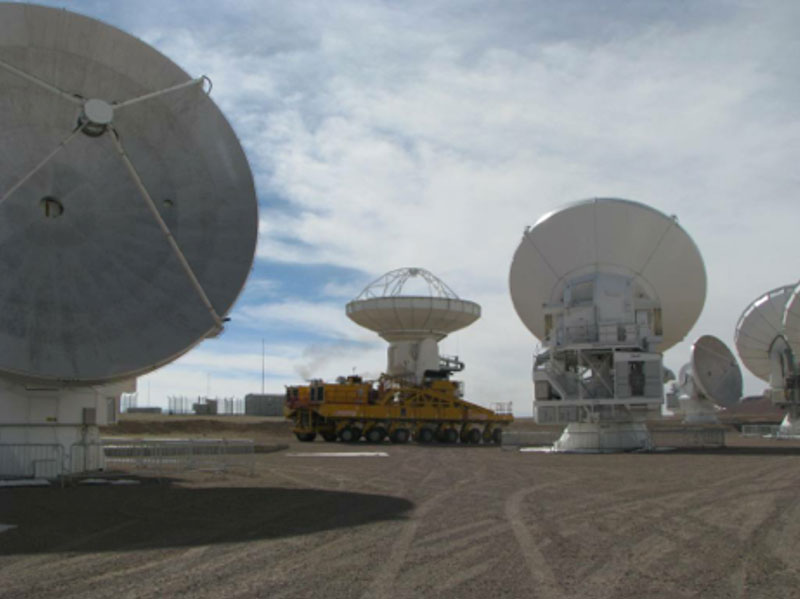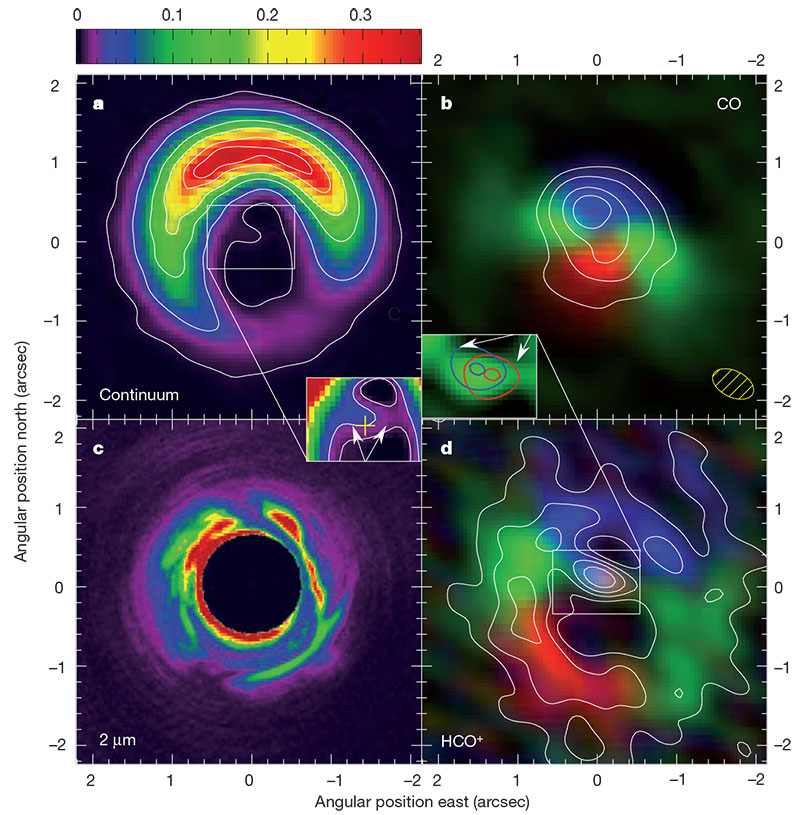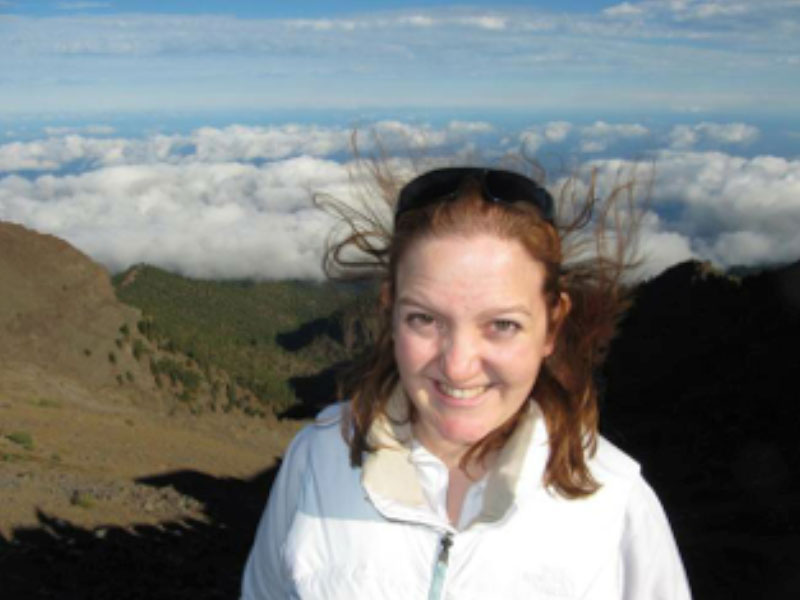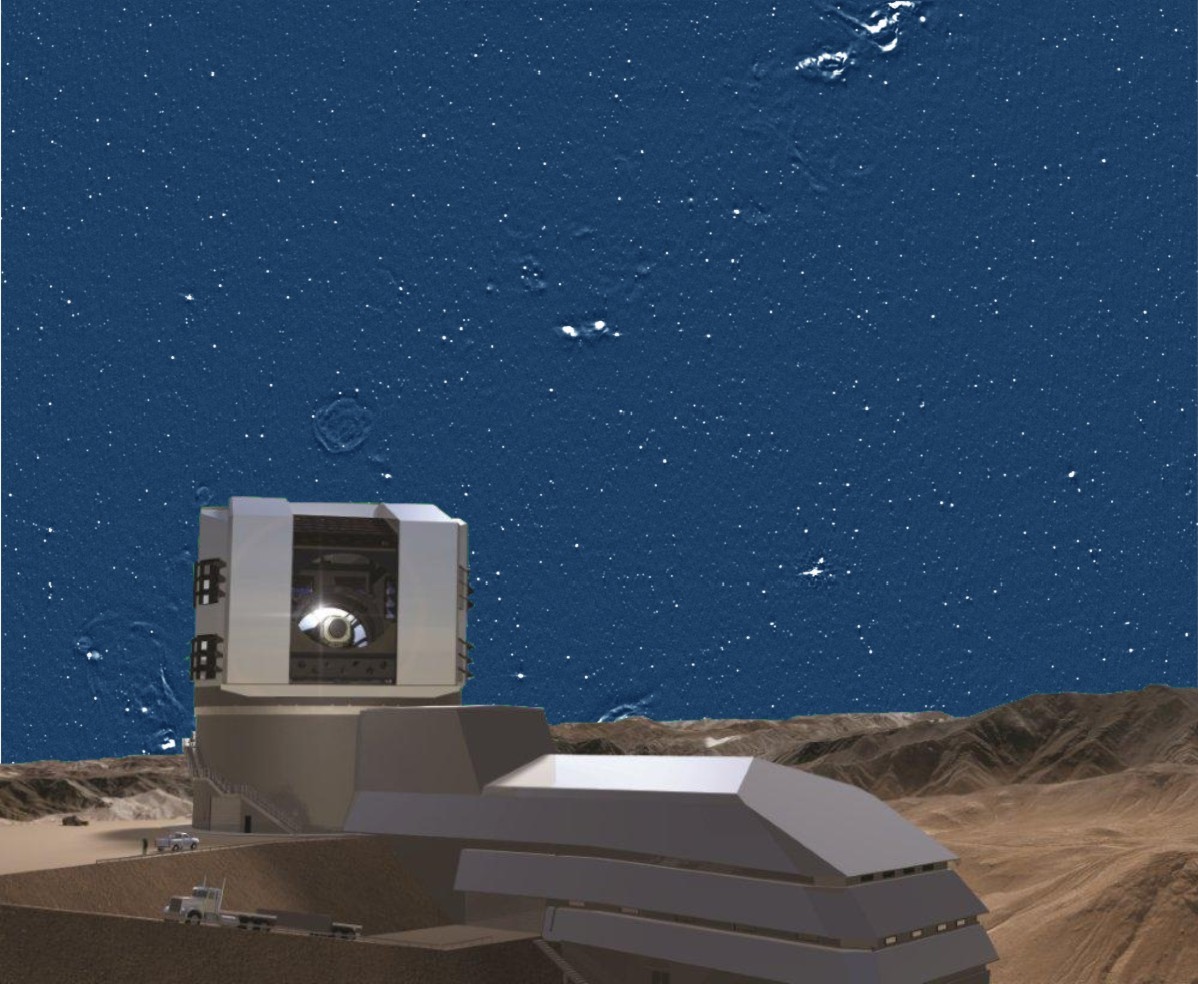NRAO eNews
Volume 6, Issue 3
March 7, 2013
NRAO eNews
Volume 6, Issue 3 • March 7, 2013
Upcoming Events
![]() Science with ALMA Band 11
Science with ALMA Band 11
Mar 19 - 20, 2013 | University of Oxford, UK
![]() 3rd VLA Data Reduction Workshop
3rd VLA Data Reduction Workshop
Apr 8 - 12, 2013 | Socorro, NM
![]() Transformational Science with ALMA: From Dust to Rocks to Planets
Transformational Science with ALMA: From Dust to Rocks to Planets
Apr 8 - 12, 2013 | Kona, Hawaii
![]() 2013 NSF Large Facilities Operations Workshop
2013 NSF Large Facilities Operations Workshop
Apr 23 - 25, 2013 | Socorro, NM
![]() 2013 NRAO Postdoctoral Symposium
2013 NRAO Postdoctoral Symposium
Apr 29 - May 01, 2013 | Green Bank, WV
![]() Radio Astronomy in the LSST Era
Radio Astronomy in the LSST Era
May 6 - 8, 2013 | Charlottesville, VA
![]() AAS Plenary Session
AAS Plenary Session
Jun 4, 2013 @ 11:40am EDT | Indianapolis, IN
![]() NAIC-NRAO Single-Dish School
NAIC-NRAO Single-Dish School
Jul 10 - 17, 2013 | Arecibo Observatory, Puerto Rico
![]() The Galactic Center: Feeding and Feedback in a Normal Galactic Nucleus
The Galactic Center: Feeding and Feedback in a Normal Galactic Nucleus
Sep 30 - Oct 04, 2013 | Santa Fe, NM
ALMA Inauguration and Project News
Al Wootten

Figure 1: The final North American antenna, DV25, arrives at the Array Operations Site in northern Chile. Credit: B. Johnson, NRAO/AUI/NSF and General Dynamics SATCOM.
The ALMA Inauguration will take place at the Operations Support Facility (OSF) near San Pedro de Atacama, Chile on 13 March 2013, just over ten years since the ALMA partnership was formed at the signing of the bilateral agreement between the US National Science Foundation and the European Southern Observatory (ESO) on 23 February 2003.
The final North American antenna, number 25, was delivered to the ALMA array on 21 February. On the way, the antenna made a victory lap around the array for a filming event. The first of the 25 antennas passed its acceptance review 6 Feb 2009 with a design featuring major advances beyond the prototype, which was accepted in May 2002. This is the 56th antenna outfitted and tested by the ALMA team. It is located on pad A106 near the Array Operations Site (AOS) technical building, just over 1.5 km from the most distant antenna on pad A138, and will be employed in commissioning of phase correction strategies for long baselines.
After completing Cycle 0 Early Science data collection at the beginning of January 2013, software enabling Cycle 1 observations was tested and accepted. Several Cycle 1 projects were then run; assessment of the data is on-going. February 2013 was dedicated to commissioning tasks on the array. The altiplanic winter did not reach the epic proportions seen in 2012 but nonetheless produced considerable downpours, at one point washing out the main highway between Calama and San Pedro de Atacama.
ALMA in the Coming Decade: A Development Workshop
Al Wootten
ALMA Early Science results have been pouring out, and more than 30 papers have now been published on a wide range of topics. Installation and commissioning of the final receiver bands funded for construction has begun. In commissioning and Early Science, ALMA has operated at wavelengths from 3mm to 0.3mm across a decade of nearly complete frequency access as enabled by its broad bandwidth receivers, powerful correlators and spectacular site. Having invested ~$1.3B to realize the biggest historical advance in ground-based astronomy, it is vital to maintain and expand its capabilities.
The ALMA Operations Plan envisages an ongoing program of development and upgrades that may include hardware, software, or data analysis tools. With a modest investment, ALMA will continue to lead astronomical research through the 2011-2020 decade and beyond. Construction of the first post-construction receiver bands, phasing hardware, and new data analysis tools has commenced in North America partially under a program of Development Studies submitted in response to a Call issued in November 2011. In response to that Call, 21 submissions were received involving 77 investigators from 26 institutions. After review by an external panel, eight proposals were funded; these are now reaching the end of their funding periods.
A new Call for Development Studies, followed by a Call for Development Projects, will be issued in Spring 2013. To support this new Call, an informational workshop will be held, with participation available via video and audio links, on Thursday, 18 April 2013 at NRAO headquarters in Charlottesville, VA. An overview of the current ALMA Development Plan and studies now under way will be given. Additional information regarding this ALMA Development workshop will soon be available on-line.
These Calls are intended to attract proposals for innovative ideas that address current and future scientific opportunities with ALMA. All interested parties located within the North American ALMA partnership are eligible to participate in these studies.
The primary aims of these studies are to:
- give groups in North America the opportunity to propose ALMA upgrades that may later be implemented as part of the ALMA Development Plan;
- support the development of conceptual and detailed designs for ALMA upgrades; and
- encourage relevant long-term research and development in areas important for ALMA.
The completed studies will be used, together with similar studies from the other ALMA partners, to augment and implement the ALMA Development Plan.
This Month @ the NAASC
ALMA Observes a Flow of Gas Through a Protoplanetary Disk

One area of astronomical research that drove the ALMA design specifications is the study of protoplanetary disks. In a recent Nature paper (493, 191), Simon Casassus of the University of Chile and his collaborators present Early Science ALMA observations of the young star HD 142527. The star was previously known from infrared observations to have a large gap between its 10 AU radius inner disk and the edge of a disrupted outer disk located 140 AU from the star (see Figure 1c in the paper).
The disrupted nature of the outer disk is believed to be the result of a planet-sized body orbiting 90 AU from the star. With ALMA, the authors observed the CO (3-2), 345 GHz dust continuum and the dense gas tracer HCO+ (4-3). While the CO shows that some gas suffuses the gap region, the HCO+ (4-3) is observed to trace denser filaments of gas bridging the outer disk to the inner disk (Figure 1d). Further, the gas along the filaments is blue-shifted in the direction of the star on the near (eastern) edge and redshifted on the far (western) edge.
The authors speculate that the gap-crossing accretion flow may be material straddling the putative protoplanet also responsible for clearing the gap. The authors use the HCO+ emission and the spur of dust continuum observed to be co-spatial with the gas filament (Figure 1a), to estimate the mass in the inflow. They conclude that the rate at which material is being delivered in the inner disk is sufficient to offset the rate at which the inner disk is being depleted by accretion onto the star.
Director's Discretionary Time and a new Science Portal release
A new version of the ALMA Science Portal debuted 1 March 2013. Its new features include a description of how to apply for ALMA Director's Discretionary Time (DDT). DDT applications must contain a strong justification for why they should be considered – for example, to observe a sudden or unexpected astronomical event, or for immediate follow-up of a new discovery in a highly competitive field – and explain why a proposal was not submitted as part of the regular Cycle 1 process. A maximum of 40 hours (5% of the available time for science) will be dedicated to the execution of DDT programs in Cycle 1.
Also included in the new ALMA science portal are instructions on preparing and triggering target of opportunity observations, a brief guide to ALMA data processing, and a revised menu layout.
An ALMA Data Reduction Visit
Katherine Alatalo (IPAC, Caltech)

I am Principal Investigator (PI) for an ALMA Cycle 0 Early Science project centered around detecting the molecular gas shock tracer SiO in a nearby, early-type galaxy that is undergoing an AGN-driven expulsion of its molecular gas, and what appears to be a complete quenching of its star formation. The ALMA data for our project were acquired in Chile, reviewed and reduced by the NRAO – North American ALMA Science Center (NAASC) staff in Charlottesville, Virginia, and then made available to me and my collaborators via the ALMA Archive.
To improve our understanding of how to optimally process and analyze these ALMA data, I decided to take advantage of the NAASC data reduction visitor program. The majority of short-term NAASC visitors, such as myself, are seeking access to NAASC computing facilities and expert assistance with re-processing and analyzing their ALMA data. But short-term NAASC visits may also be scheduled for assistance with the technical aspects of ALMA proposals or designing scheduling blocks, or in support of archival projects.
The highlight for my NAASC visit was the substantial in-person interaction I was able to have in Charlottesville with Mark Lacy, the NAASC contact scientist for my ALMA project. Mark and I spent many hours working through my ALMA Early Science data, vastly improving it. I left Charlottesville with a deeper knowledge of what I am doing, as well as the capability to work on my own with these ALMA datasets in the Common Astronomy Software Application (CASA) package.
I would recommend that every ALMA investigator take advantage of the NAASC data reduction visitor program. As an experienced radio astronomer, a week was the right amount of time for me to spend at the NAASC. I would recommend that someone starting in radio astronomy from scratch allow themselves a slightly longer visit.
2013 Rocks!

The North American ALMA Science Center (NAASC), in cooperation with the Academia Sinica Institute of Astronomy and Astrophysics (ASIAA) in Taiwan, is organizing the 7th NAASC workshop titled Transformational Science with ALMA: From Dust to Rocks to Planets - Formation and Evolution of Planetary Systems. This NAASC-ASIAA "2013 Rocks!" workshop will be held 8-12 April 2013 on the Big Island of Hawaii.
Though early registration is now closed, late registration will be available until 15 March. Student participation is highly encouraged. There are just a few student subsidies still available, though, so send in your student support request forms in as soon as possible. The final scientific program is posted on-line.
Finally, we encourage you to follow 2013 Rocks! on Facebook. Please visit and “Like” us there to keep up-to-date on workshop developments. This tool also allows you to connect with other participants. Students can use this Facebook page to find roommates for the conference.
As always, if there are any issues or questions, please contact the LOC at 2013rocks@nrao.edu.
The VLA Calibration Pipeline
Claire Chandler
![[Left] L-band image of G55.7+3.4 produced from data flagged and calibrated by hand; the rms noise is 11.5 μJy/beam. [Right] An image made from data flagged and calibrated by the VLA calibration pipeline; the rms noise is 12.2 μJy/beam. Differences in the source structure and/or source flux density are dominated by the uncertainty in the deconvolution process, not the calibration and flagging (images courtesy Urvashi Rao).](images/pipeline.jpg)
Figure 1: [Left] L-band image of G55.7+3.4 produced from data flagged and calibrated by hand; the rms noise is 11.5 μJy/beam. [Right] An image made from data flagged and calibrated by the VLA calibration pipeline; the rms noise is 12.2 μJy/beam. Differences in the source structure and/or source flux density are dominated by the uncertainty in the deconvolution process, not the calibration and flagging (images courtesy Urvashi Rao).
Starting with the current D-configuration, all observations on the Jansky Very Large Array (VLA) are being run through an automated calibration pipeline. All pipeline-calibrated scheduling blocks undergo quality assurance checks by NRAO staff, after which observers may request a calibrated CASA measurement set for download. The first pipeline-reduced data were delivered to the PI of a VLA project on 30 January 2013, and the pipeline continues to run 24 hours/day reducing VLA observations. While the calibration pipeline is optimized for Stokes I continuum observations, it can also work for some spectral line observing set-ups as well with minor modifications. The pipeline scripts are available for download, with instructions for installing and running the pipeline. The pipeline is based on CASA tasks and python scripts. The pipeline includes automated RFI flagging and identification of system issues, but in some cases extra flagging may be necessary before self-calibration and imaging.
The pipeline heuristics have been developed by NRAO staff, and validated through comparisons with expert, by-hand calibration and imaging. In all cases the images produced from the pipeline-calibrated data compare well with those made using data reduced by hand. An example L-band image of the supernova remnant G55.7+3.4 made using data calibrated and flagged by hand, and via the pipeline, is shown in Figure 1. The heuristics of the VLA calibration pipeline will continue to be developed, and options for supporting different types of reprocessing will become available in the coming months. Feedback on the pipeline output is welcome, and may be provided through the pipeline department of the NRAO Helpdesk.
VLA/VLBA Presentations Repository
Juergen Ott and Gustaaf van Moorsel
NRAO plans to create an online repository of presentations based on VLA and VLBA observations. If you are willing to share your presentation based on recent VLA or VLBA science results, and do not mind others using it in their own presentations, please consider sending us a copy in pdf format, and we will make it available to the community on an appropriate web page. You can contact us using the NRAO Helpdesk, department 'General.'
We also intend to include presentations of a more technical nature about VLA and VLBA capabilities; we expect the latter contributions to come mostly, but not exclusively, from our own staff.
Radio Astronomy in the LSST Era Reminder
Ken Kellermann

Abstract submissions for the NRAO workshop, “Radio Astronomy in the LSST Era” are due by 15 March. Registration will be open until 15 April. Participation from those not giving formal presentations is encouraged, but will be limited by available space. For more information and registration, please see the workshop website.
2013 Jansky Lectureship Nominations Open
Chris Carilli and J.J. Utley
The National Radio Astronomy Observatory invites nominations for the 2013 Karl G. Jansky Lectureship. The Jansky Lectureship is an honor established by the trustees of Associated Universities, Inc to recognize outstanding contributions to the advancement of radio astronomy. First awarded in 1966, this Lectureship is named in honor of Karl G. Jansky who first detected radio waves from a cosmic source. Additional information is on-line.
Please send your nomination, including a concise justification for your choice, to jutley@nrao.edu by the 28 March 2013 deadline.
Recent Press Releases

Discoveries Suggest Icy Cosmic Start for Amino Acids and DNA Ingredients
28 Feb 2013
Using new technology at the telescope and in laboratories, researchers have discovered an important pair of prebiotic molecules in interstellar space. The discoveries indicate that some basic chemicals that are key steps on the way to life may have formed on dusty ice grains floating between the stars. Read more…

Getting the Right Spin on a Close-Passing Asteroid
11 Feb 2013
The record-setting close approach of an asteroid on 15 February 2013 is an exciting opportunity for scientists, and a research team will use National Radio Astronomy Observatory (NRAO) and NASA telescopes to gain a key clue that will help them predict the future path of this nearby cosmic neighbor. Read More …
Career Opportunities
New Postings
Assistant Vice President for Administration: Associated Universities Inc., in Washington, DC is seeking an Assistant Vice President for Administration to assist the Vice President for Administration in a wide range of policy and administrative corporate functions including contracting, legal, risk management, environmental, health, safety, security, and facilities planning. He/she is also the primary point of contact for strategic Human Resources leadership for AUI, overseeing HR policies and operations in the corporate office and at AUI's Research Centers, including facilities in the United States and in Chile.
VLBA Station Electronics Technician: The NRAO in Socorro, NM is accepting applications for a VLBA Station Electronics Technician. The successful candidate will be responsible for repairs and maintenance at the Very Long Baseline Array (VLBA) Station, including the 25-meter antenna and support equipment. The technician must respond to emergency repair situations as dictated by the impact on the station's ability to perform intended functions.
Assistant or Associate Scientist: The NRAO in Charlottesville, VA invites applications for a scientist position. The appointment will be for a period of 2 years (with the possibility to apply for future openings as an internal candidate). The appointment will be made at the assistant or associate level according to experience level. The primary duties of the successful applicant will be to assist in the ALMA data calibration, imaging, and packaging, and with providing one-on-one support to ALMA users.
Data Analyst: The National Radio Astronomy Observatory in Charlottesville, VA is recruiting for a Data Analyst. The primary goal of the Data Analyst will be to provide assistance to Observatory users by focusing on data reduction and assessment of the quality of the data, as well as pipeline operations and testing of ALMA early science data products.
Software Engineer II: The NRAO in Socorro, NM invites applications for a Systems Software Engineer II. The successful candidate will be working as software developer in the Control and Correlator subsystems, developing new features and completing and extending the current functionalities.
STEM Education Development Officer-AUI: Associated Universities Inc. (AUI), in Washington, DC is recruiting for a STEM Education Development Officer. The incumbent will be based at the National Radio Astronomy Observatory (NRAO) in Charlottesville, VA and work closely with the NRAO Education and Public Outreach (EPO) team, under the supervision of the Assistant Director for EPO. The STEM Education Development Officer will identify and implement opportunities for AUI to contribute to the advancement of STEM (science, technology, engineering, and math) education via partnerships, grants, and the leveraging of existing NRAO and other AUI assets, which include a large staff of scientists and engineers and a talented, geographically dispersed EPO staff.
From the Archives
Ellen Bouton

About this month's photo: Hobo, a long-time Observatory resident, was born in Green Bank on 7 December 1964 to John Hungerbuhler's family dog, Digy. Hobo lived with the Hungerbuhlers, and then at various times with the families of Omar Bowyer, Buck Peery, John Payne, Dave Hogg, Ken Kellermann, and others (and at times managed to live and eat with several families at once). He was a familiar face at the Jansky Lab, the shops, and the telescopes, and loved to join hiking groups. One hike was longer than expected: Hobo and Tom Cram started out toward Buffalo Ridge and ended up in Monterey. Sometime after 1977, Hobo moved to Charlottesville and then Tucson with Tom Cram, and died in Tucson. After Hobo's death in Tucson, he was cremated and his ashes shipped to the Observatory at Green Bank. He is buried across the road from the 140 Foot Telescope, in an enclosed area by a geological survey marker. Thanks to the numerous people who helped verify information about Hobo (and, in the process, had their own Hobo stories to tell).
From the Archives is an ongoing series illustrating NRAO and US radio astronomy history via images selected from our collections of individuals' and institutional papers. If readers have images they believe would be of interest to the Archives, please contact Ellen Bouton, ebouton@nrao.edu.

